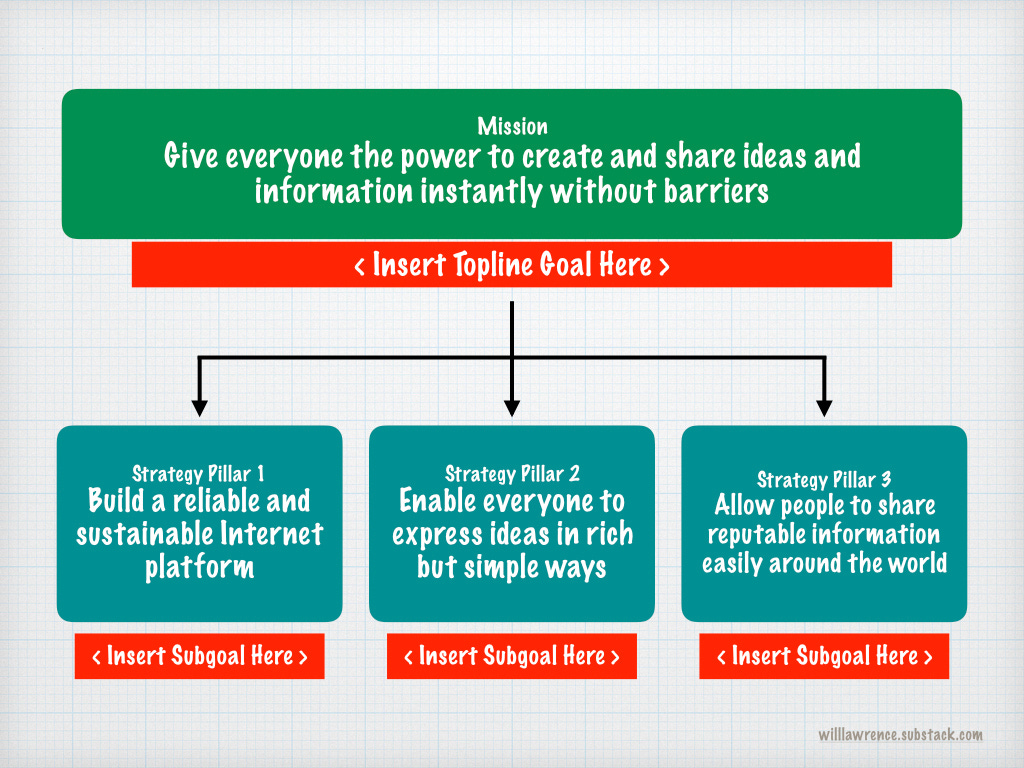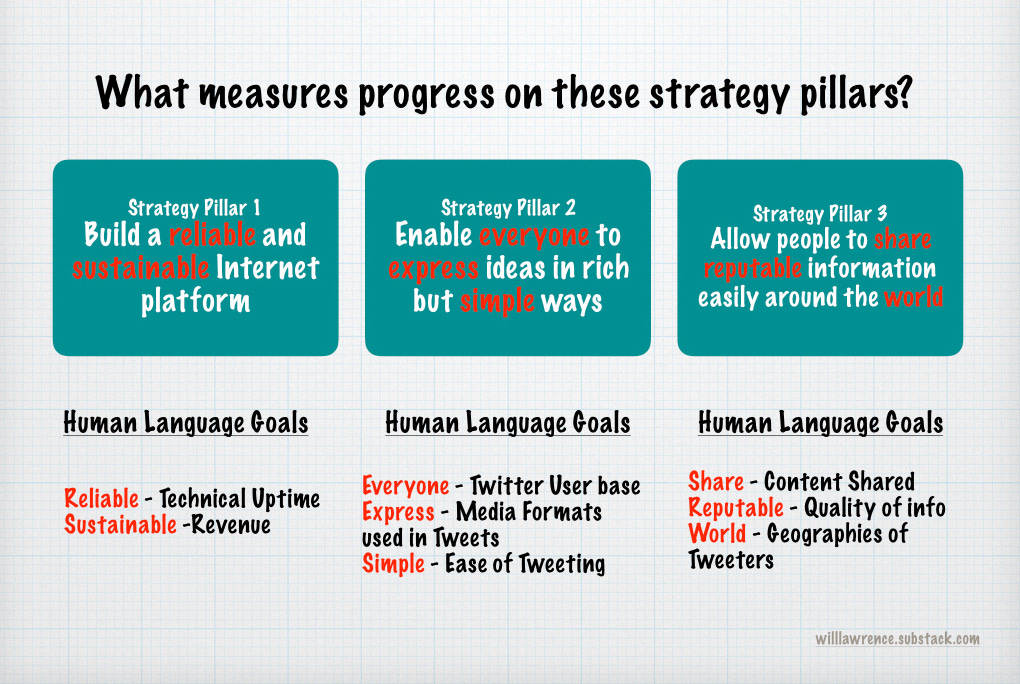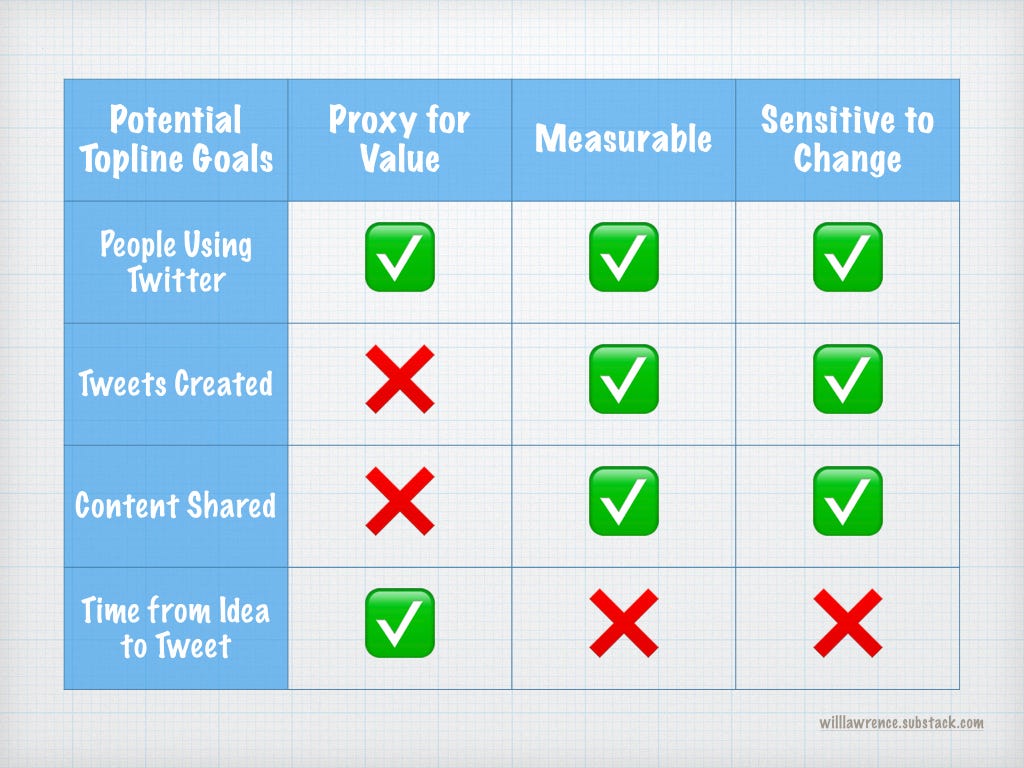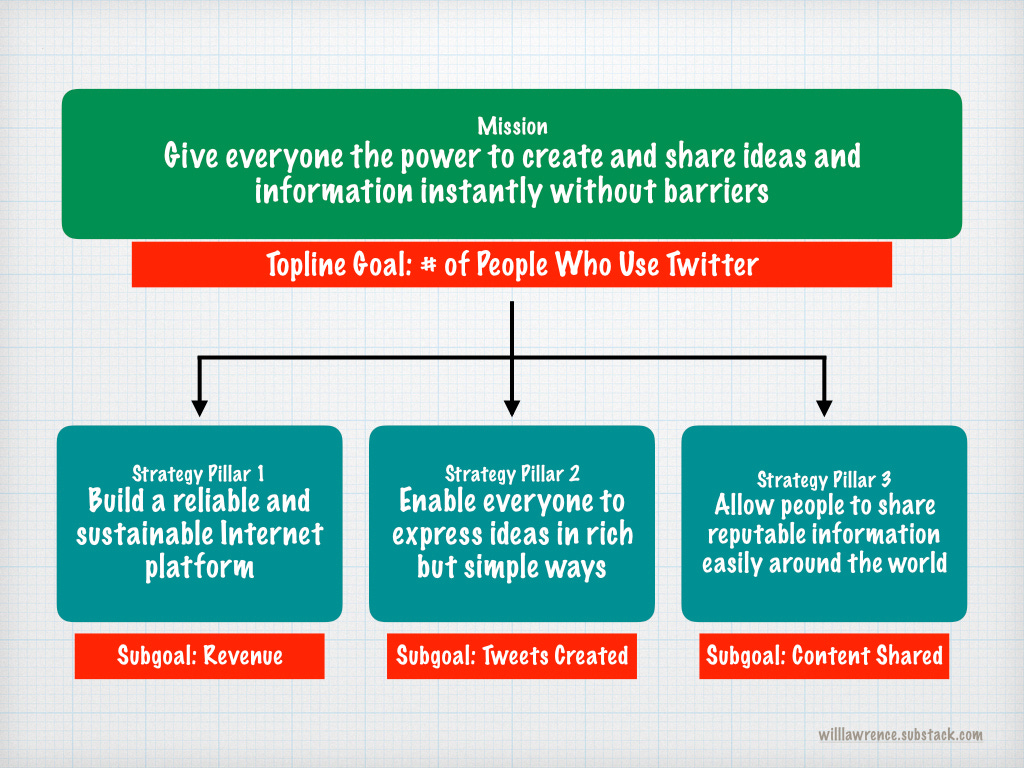Setting Goals That Actually Work
How to set and prioritize goals that lead to success
Hey there, I’m Will!👋🏽 Welcome to my weekly newsletter where I write about product strategy, career advice and frameworks I'm using to navigate life.
Question: What do you want me to write about? I’m planning my writing for 2021 now and want this newsletter to be as useful as possible for you. Shoot me an email or reach out on Twitter - I’ll really appreciate it!
If someone forwarded you this, feel free to subscribe here:
Over the last few weeks, we’ve gone deeper into product strategy principles. Here’s a tl;dr on the concepts we’ve discussed (with links if you want to learn more):
Vision - Your Northstar: The change you want in the world.
Mission - Your Route: The way you decide to bring your vision to reality.
Strategy - Your Transportation: The ways to move towards your mission.
Today, let’s add a fourth key concept to our product strategy toolbox:
Goals - Your GPS: The ways to measure progress on your strategy.
Goals Measure Success
Whenever we set a goal, we define success. If I set a goal to land a specific job, I’m claiming that the job = success.
But how do we know if this goal is in line with our definition of success and not influenced by forces like vanity, peer-pressure or greed?
Here is a lesson I learned from product management that changed my life: success = advancing your mission.
It is easy to be distracted by things that don’t matter. Anchoring on this lesson allows you to stay focused on bringing your mission to reality.
Adding Goals to Your Strategy
Goals, like a GPS, can tell you if you’re making progress. But they’re only useful if you’ve already defined a route you want to take (mission) and how you’re going to move along that route (strategy). Imagine using a GPS without a destination in mind or without choosing if you’ll drive or bike to your location — not the most useful!
This is why it’s helpful to set two goals: a topline goal for your mission and subgoals for the pillars of your strategy.
Let’s continue with the mission and strategy pillars that we defined last week for Twitter:
Now let’s add goals to this framework.
A topline goal that corresponds to your mission
Subgoals that corresponds to each pillar of your strategy
The topline goal is meant to indicate progress on your overall mission while subgoals track progress in different legs of your strategy. If your strategy is aligned with your mission, moving these subgoals should also move your topline goal!
To add goals into our product strategy, we’ll go through two steps:
Brainstorm Human-Language Goals for our mission and strategy pillars
Prioritize a topline goal and subgoals
Brainstorm Human-Language Goals
When choosing goals, it’s tempting to jump straight to a number (ex. “Our topline goal is $1 billion of annual revenue”). But doing this, like my job example, assumes a definition of success (and you know what happens when we assume).
Let’s be intentional with our definition of success and start by asking ourselves two questions:
What measures progress towards our mission? (topline goal)
What measures progress towards each of our strategy pillars? (subgoals)
To avoid jumping to a number, I find it helpful to answer these questions with human-language goals. These should be phrases (ex. “People using Twitter”) instead of numbers (ex. “500 daily active users in Q1”). Human-language goals prevent us from getting lost finding the perfect number before we define success itself.
Start by brainstorming human language goals for your mission and strategy pillars. A useful way to kickstart this brainstorm is to tie keywords to a way of measuring them. Let me explain by finding human language goals for our mission first:
This is not an exhaustive list of everything that Twitter may want to measure. Instead, it's a handful of goals that may indicate progress on this mission.
Let’s do the same thing for each strategy pillar:
We now have a list of potential goals for our mission and strategy pillars. Let’s prioritize one goal from each of these lists.
Prioritizing goals
The best goals have three qualities:
1. Proxy for value created - Does the thing you’re measuring actually create value? For example, if 1 billion people shared an additional link on Twitter a day, would the world be a better place? Probably not.
2. Measurable - “If you can’t measure it, you can’t improve it.” - Peter Drucker. The ability to quantify a goal makes it easier to track progress.
3. Sensitive to Change - Imagine if your GPS only showed an estimated time of arrival by hours (ex. ETA: less than 1 hour). You could drive for 40 minutes and your ETA wouldn’t change at all! This is an example of why a moveable measurement (in this case minutes) is much more useful at tracking progress because your efforts lead to changes in real-time.
A great way to prioritize a single goal from a list is to see if they meet the three criteria above. Let’s try this with our topline goal.
🛎 🛎🛎 We have a winner! Looks like daily active users is the best topline goal from the list. If you repeat this for each strategy pillar, you’ll now have a strategy complete with goals. Congrats! Here’s what they looks like:
The last step in creating a product strategy is identifying the tactics you’ll choose to move your goals. Will explore this topic in-depth next week.
Summary
Goals measure progress on your strategy
Success = advancing your strategy
Don’t jump straight to a number goal. First think about what a successful strategy looks like.
Choose a topline goal and subgoals to track your progress
Start by creating human-language goals to measure progress towards your mission and strategy pillars
Prioritize these against three criteria: 1) proxy for value created, 2) measurable, 3) sensitivity to change
Thanks for reading! 💕 Think a friend may like it? Forward this email or share it below!









I enjoyed the layout!